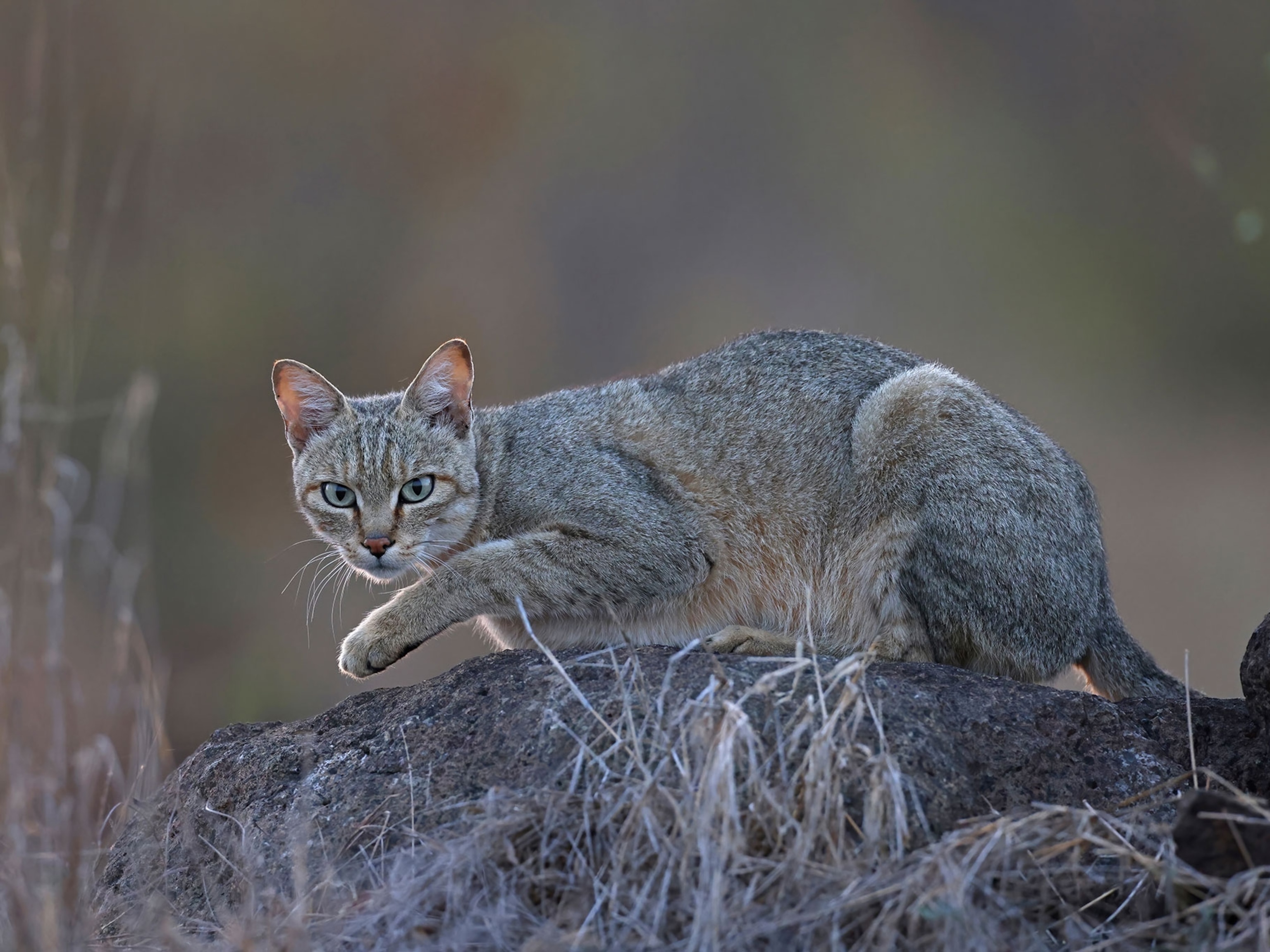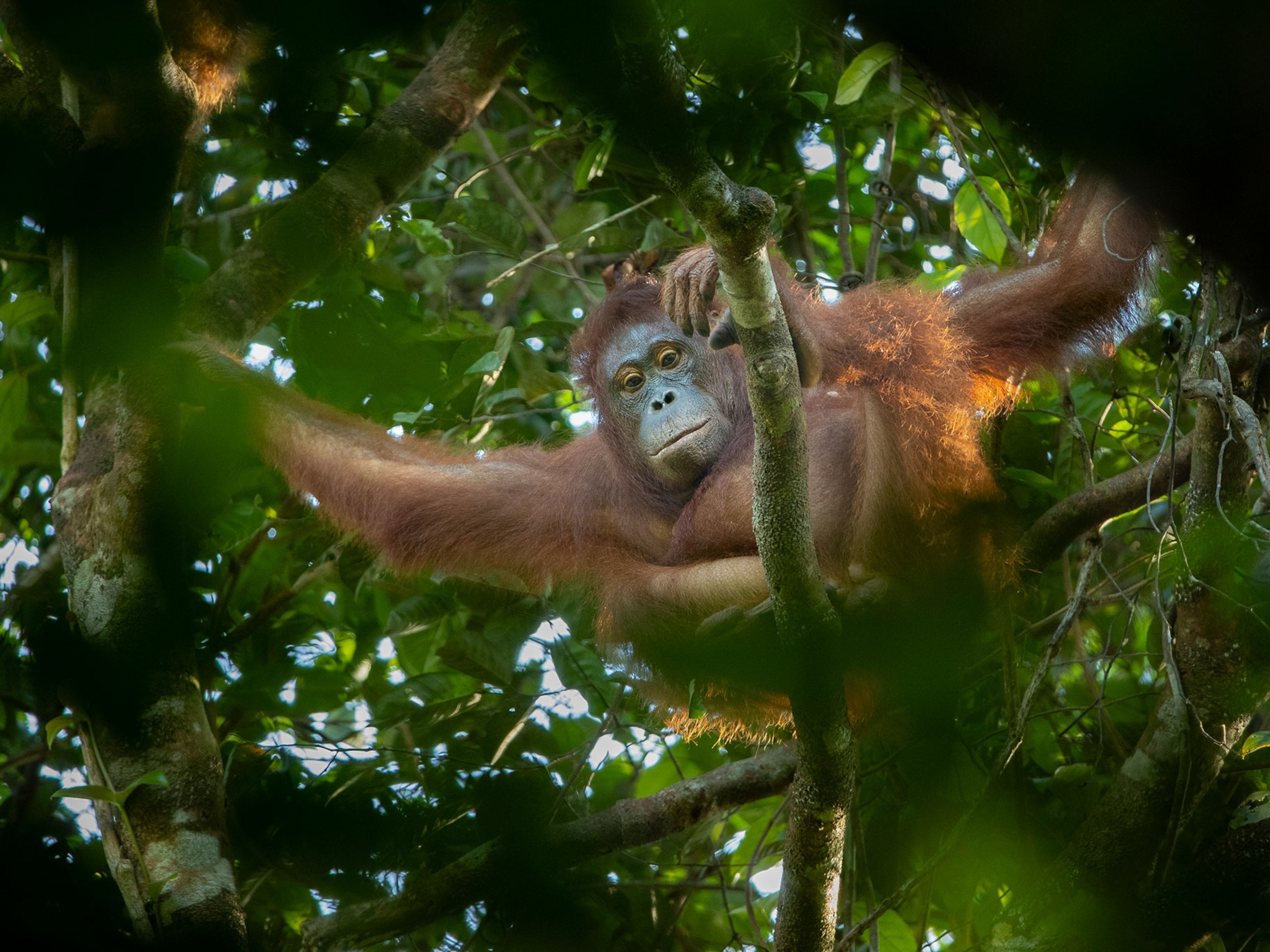Why Mongooses All Give Birth on the Same Day
These small, sleek mammals have some intriguing quirks in the animal kingdom—like male childcare.
"The motto of all the mongoose family is, 'Run and find out,'" author Rudyard Kipling explains in his 1894 book Rikki-Tikki-Tavi.
In true mongoose fashion, then, we decided to investigate these charismatic African and Asian carnivores, thanks to a new study on their unique child-care system.
Escort Service
The banded mongoose of sub-Saharan Africa is the only known animal whose pups get a mentor. Unrelated adults, called “escorts,” feed, carry, and educate new pups. These mongoose mentors are often male.
“The same pup will stay with the same adult day after day after day for about two months until the offspring can find its own food,” says Michael Cant, an ecologist at the University of Exeter's Penryn Campus in Wales.
How these bonds form is a bit mysterious, but it seems to be “a two-way street,” Cant says. A pup will follow an adult around, and the adult occasionally stops to check that “the right pup” is following. Some pups follow only one adult, while others will follow more than one.
Cant co-authored the new study showing that young mongooses learn to forage from these mentors, acquiring behaviors that will last a lifetime.
Escorting may have evolved because learning diverse methods of foraging can reduce competition within the large groups that banded mongooses live in. The study also argues that cultural learning is “not restricted to primates and cetaceans,” but is actually very pervasive in the wild, Cant says.
Cant has been studying mongooses for 23 years, and says that part of their charm is “they reliably do everything wrong”—confounding conventional wisdom about animal behavior.
Group Ugh!
Mongooses, which live in groups, all give birth on the same day.
When 12 mothers give birth at the same time in an underground den, it’s hard to tell whose baby is whose. And that’s a good thing, if you’re a young mongoose mother. That way, the older females that co-dominate the group “won’t kill your offspring because they don’t know whose is whose,” and they won’t risk killing their own, Cant says.
Synchronous birth protects young females by reducing the infanticide that would otherwise be used by the old guard to keep the younger animals from successfully producing offspring.
Get Out
Those older, co-dominant females may maintain healthy group size by violently evicting younger females likely to breed.
If, as a female, you don’t get evicted by age three, “you get to join the older females and become the evictor yourself,” Cant says. The dominant females boot out their closest relatives, who are less likely to fight back.
Mama’s Pups
Groups are vigorously defended by males, so it’s hard for individuals to disperse to new groups, which is one reason why up to 80 percent of mongooses will spend their whole lives as part of the group they were born to. (Related: "Failure to Launch: These Animals Stay With Their Mom for Years.")
Serpent Slayers
Being warriors helps when it comes to battling venomous serpents.
“They are fierce snake fighters,” says Julie Kern, a zoologist at the University of Bristol and founder of the Dwarf Mongoose Research Project.
“Solitary species will take on snakes themselves, while social species join together” to attack in a mob. (Watch a mongoose swing from a deadly snake.)
With lightning reflexes and a thick hide, a mongoose can tangle with a venomous snake—and end up enjoying a long, skinny meal.
Here Comes the Grooming
Kern co-authored a study published this week on the dwarf mongoose, finding that Africa’s smallest carnivore can remember help given by another mongoose in its group and can return the favor—sometimes with services other than those rendered.
The researchers played a recording of one particular mongoose’s surveillance call, alerting the group that it was on sentinel duty. Later, that individual received more grooming than usual from its group mates.
Heck, who wouldn’t perform neighborhood watch for a free spa treatment?
Have a question about the weird and wild world? Tweet me or find me on Facebook. Weird Animal Question of the Week answers your questions every Saturday.





